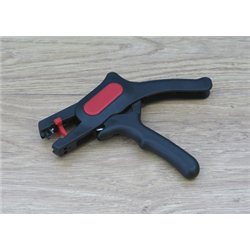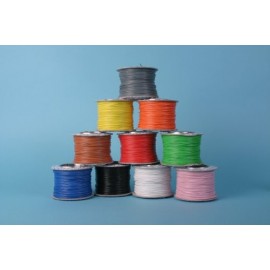Generally, plastic model plane kits do not come with plinths supplied. Nowadays, the majority of kits are designed to...
No products
Product successfully added to your shopping cart
There are 0 items in your cart. There is 1 item in your cart.
Search Tips
Christmas and New Year
We are dispatching orders every weekday apart from Christmas Day, Boxing Day and New Year's Day.
If you order is time critical, select next day delivery at checkout.
The shop in Sandown is closed from 25th December, reopening on 30th December.
Why is 7/0.2 wire used for wiring model railway layouts?
7/0.2 wire is what railway modellers most commonly use for wiring auxiliary features to their layouts and to carry power to and from a controller and the tracks. The code simply relates to the number of individual metal strands inside a wire (in this case 7) and the measurement of a single strand inside the flex (in this case 0.2) which means that each strand is 0.2mm in diameter.
This type of wire is known as a stranded wire and is beneficial for use in electronics where physical flexibility is a desired quality of the wire. This is something that you would not get so much with a solid single core type of wire, which tend to be quite stiff and awkward to install.
Having said that, 7 strand wire is not designed to be constantly flexed during operation. In these circumstances, a wire with 19 or more strands would be more appropriate. But as the constant flexing of wire is not an issue on a model railway, generally, 7/0.2 wire will provide modellers with enough flexibility for the one-off installation and occasional movement of their wires, whilst a diameter of 0.2 is more than sufficient to carry the amount of current that we use for pretty much anything model railway related making it the perfect choice.
It's worth mentioning that there are many differences between stranded and single core wire other than flexibility, however, none of which are relevant for wiring a layout so that is probably a tutorial best left for another day. In the meantime, rest assured that if you need to wire a controller, signal, point-motor or add some lighting to your layout, then 7/0.2 wire is a good place to start.
Click here to receive the tips weekly in your mailbox. You can unsubscribe at any time.










